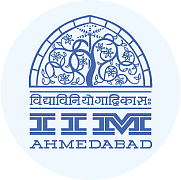CAT Exam > CAT Questions > An autobiographical numbers are special types...
Start Learning for Free
An autobiographical numbers are special types of numbers whose structure describes itself. Each of the autobiographical number's digit indicates how many times the digit corresponding to that position occurs within the number. The first digit from the left indicates the quantity of zeroes in the number. The second digit indicates the number of 1s, the third digit indicates the number of 2s and so on until the end. 1210 is one such 4 digit autobiographical number and 3211000 is another 7 digit autobiographical number.
It so happens that there is only one 10 digit auto-biographical number such that-
1. The number has 10 digits.
2. The first digit from the left indicates the number of zeroes in the number.
3. For position 'n' from the beginning, the digit represents the number of times the number 'n-1' occurs in the number.
Q. How many different digits are used in the 10 digit number?
Correct answer is '4'. Can you explain this answer?
Most Upvoted Answer
An autobiographical numbers are special types of numbers whose structu...
We first observe some patterns from the given autobiographical numbers- 1210 and 3211000.
The sum of digits of 1210= 1+2+1+0= 4 and sum of digits of 3211000= 3+2+1+1=7. So, it turns out that the sum of digits of the number= number of digits in the autobiographical number, which makes sense because the digits represent how many times a particular digit occurred within the number.
So, therefore for the 10 digit number, the number of times different digits occur will be 10 and hence the sum of digits will be 10.
Let us say that the 10 digit number is ABCDEFGHIJ.
So, A+B+C+D+E+F+G+H+I+J= 10, where A= number of zeroes, B= number of ones and so on. .....(1)
From equation (1), it is clear that the number cannot have too many large digits.
We cannot have 9+1+0+0+0+0... because 9 and 1 are two digits and the remaining digits i.e. 8 digits can at max be zeroes thereby contradicting the first digit to be 9.
If we make the first digit 8, we will need 8 zeroes in the number and 2 non-zero numbers out of which 8 is already one such number. So, the other number has to be 2, but this will again contradict because it will mean a certain digit to occur twice and therefore only 7 zeroes can be accommodated.
If we use the first digit as 7, we will need 7 zeroes and 3 non-zero digits out of which 7 is one such digit. So, ABCDEFGHIJ= 7BCDEFG1IJ.
Since A uses 7 and so 7 occurs once, H=1 because it represents the number of times 7 was used. Out of the remaining 8 digit, one will have to be 2, but that would mean a particular digit to be used twice and hence we will be left with only 6 zeroes. This too contradicts the use of A=7.
When A=6, ABCDEFGHIJ= 6BCDEF1HIJ. We have already used 2 non zero digits and there are 6 zeroes and so we have 4 non-zero digits in total. 6+1+X+Y=10 (where X and Y are the other non-zero digits).
X+Y=3. So, either X and Y can be either 1 and 2 or 2 and 1 respectively.
Therefore the sum of digits will look like 6+1+1+2= 10. Clearly there are 2 ones and 1 two.
Hence, ABCDEFGHIJ= 6210001000, which is our only 10 digit autobiographical number.
Community Answer
An autobiographical numbers are special types of numbers whose structu...
Explanation:
To find the number of different digits used in the 10-digit autobiographical number, we need to analyze the given conditions and understand how the number is constructed.
Understanding the conditions:
1. The number has 10 digits.
2. The first digit from the left indicates the number of zeroes in the number.
3. For position n from the beginning, the digit represents the number of times the number n-1 occurs in the number.
Construction of the 10-digit autobiographical number:
Let's start constructing the number step by step following the given conditions.
Step 1:
Since the first digit indicates the number of zeroes in the number, the number must have a certain number of zeroes. Let's assume it has 'x' zeroes.
Step 2:
Now, let's consider the second digit. It represents the number of times the number 1 occurs in the number. As per the conditions, the second digit should be 'x' itself, as there are 'x' zeroes in the number.
Step 3:
Moving on to the third digit, it represents the number of times the number 2 occurs in the number. Since the second digit is 'x', the third digit should also be 'x'.
Step 4:
Continuing this pattern, we can conclude that each digit from the third digit onwards will be 'x' itself.
Step 5:
Now, let's consider the first condition which states that the number has 10 digits. So, we need to find the value of 'x' that satisfies this condition.
Calculating the value of 'x':
From the above steps, we can see that the number will have 'x' zeroes followed by 'x' ones, 'x' twos, and so on. Therefore, the total number of digits will be 1 + 1 + 1 + ... (10 times) = 10.
So, 'x' should be 1.
Final 10-digit autobiographical number:
Using 'x = 1', the 10-digit autobiographical number can be constructed as follows:
1101234567
Number of different digits used:
From the final number, we can observe that the digits 0, 1, 2, and 3 are used. Therefore, the number of different digits used in the 10-digit number is 4.
Summary:
- The 10-digit autobiographical number is constructed based on the given conditions.
- By analyzing the conditions and step-by-step construction, we find that the number of different digits used in the 10-digit number is 4.
To find the number of different digits used in the 10-digit autobiographical number, we need to analyze the given conditions and understand how the number is constructed.
Understanding the conditions:
1. The number has 10 digits.
2. The first digit from the left indicates the number of zeroes in the number.
3. For position n from the beginning, the digit represents the number of times the number n-1 occurs in the number.
Construction of the 10-digit autobiographical number:
Let's start constructing the number step by step following the given conditions.
Step 1:
Since the first digit indicates the number of zeroes in the number, the number must have a certain number of zeroes. Let's assume it has 'x' zeroes.
Step 2:
Now, let's consider the second digit. It represents the number of times the number 1 occurs in the number. As per the conditions, the second digit should be 'x' itself, as there are 'x' zeroes in the number.
Step 3:
Moving on to the third digit, it represents the number of times the number 2 occurs in the number. Since the second digit is 'x', the third digit should also be 'x'.
Step 4:
Continuing this pattern, we can conclude that each digit from the third digit onwards will be 'x' itself.
Step 5:
Now, let's consider the first condition which states that the number has 10 digits. So, we need to find the value of 'x' that satisfies this condition.
Calculating the value of 'x':
From the above steps, we can see that the number will have 'x' zeroes followed by 'x' ones, 'x' twos, and so on. Therefore, the total number of digits will be 1 + 1 + 1 + ... (10 times) = 10.
So, 'x' should be 1.
Final 10-digit autobiographical number:
Using 'x = 1', the 10-digit autobiographical number can be constructed as follows:
1101234567
Number of different digits used:
From the final number, we can observe that the digits 0, 1, 2, and 3 are used. Therefore, the number of different digits used in the 10-digit number is 4.
Summary:
- The 10-digit autobiographical number is constructed based on the given conditions.
- By analyzing the conditions and step-by-step construction, we find that the number of different digits used in the 10-digit number is 4.

|
Explore Courses for CAT exam
|

|
Similar CAT Doubts
Question Description
An autobiographical numbers are special types of numbers whose structure describes itself. Each of the autobiographical numbers digit indicates how many times the digit corresponding to that position occurs within the number. The first digit from the left indicates the quantity of zeroes in the number. The second digit indicates the number of 1s, the third digit indicates the number of 2s and so on until the end. 1210 is one such 4 digit autobiographical number and 3211000 is another 7 digit autobiographical number.It so happens that there is only one 10 digit auto-biographical number such that-1. The number has 10 digits.2. The first digit from the left indicates the number of zeroes in the number.3. For position n from the beginning, the digit represents the number of times the number n-1 occurs in the number.Q. How many different digits are used in the 10 digit number?Correct answer is '4'. Can you explain this answer? for CAT 2025 is part of CAT preparation. The Question and answers have been prepared according to the CAT exam syllabus. Information about An autobiographical numbers are special types of numbers whose structure describes itself. Each of the autobiographical numbers digit indicates how many times the digit corresponding to that position occurs within the number. The first digit from the left indicates the quantity of zeroes in the number. The second digit indicates the number of 1s, the third digit indicates the number of 2s and so on until the end. 1210 is one such 4 digit autobiographical number and 3211000 is another 7 digit autobiographical number.It so happens that there is only one 10 digit auto-biographical number such that-1. The number has 10 digits.2. The first digit from the left indicates the number of zeroes in the number.3. For position n from the beginning, the digit represents the number of times the number n-1 occurs in the number.Q. How many different digits are used in the 10 digit number?Correct answer is '4'. Can you explain this answer? covers all topics & solutions for CAT 2025 Exam. Find important definitions, questions, meanings, examples, exercises and tests below for An autobiographical numbers are special types of numbers whose structure describes itself. Each of the autobiographical numbers digit indicates how many times the digit corresponding to that position occurs within the number. The first digit from the left indicates the quantity of zeroes in the number. The second digit indicates the number of 1s, the third digit indicates the number of 2s and so on until the end. 1210 is one such 4 digit autobiographical number and 3211000 is another 7 digit autobiographical number.It so happens that there is only one 10 digit auto-biographical number such that-1. The number has 10 digits.2. The first digit from the left indicates the number of zeroes in the number.3. For position n from the beginning, the digit represents the number of times the number n-1 occurs in the number.Q. How many different digits are used in the 10 digit number?Correct answer is '4'. Can you explain this answer?.
An autobiographical numbers are special types of numbers whose structure describes itself. Each of the autobiographical numbers digit indicates how many times the digit corresponding to that position occurs within the number. The first digit from the left indicates the quantity of zeroes in the number. The second digit indicates the number of 1s, the third digit indicates the number of 2s and so on until the end. 1210 is one such 4 digit autobiographical number and 3211000 is another 7 digit autobiographical number.It so happens that there is only one 10 digit auto-biographical number such that-1. The number has 10 digits.2. The first digit from the left indicates the number of zeroes in the number.3. For position n from the beginning, the digit represents the number of times the number n-1 occurs in the number.Q. How many different digits are used in the 10 digit number?Correct answer is '4'. Can you explain this answer? for CAT 2025 is part of CAT preparation. The Question and answers have been prepared according to the CAT exam syllabus. Information about An autobiographical numbers are special types of numbers whose structure describes itself. Each of the autobiographical numbers digit indicates how many times the digit corresponding to that position occurs within the number. The first digit from the left indicates the quantity of zeroes in the number. The second digit indicates the number of 1s, the third digit indicates the number of 2s and so on until the end. 1210 is one such 4 digit autobiographical number and 3211000 is another 7 digit autobiographical number.It so happens that there is only one 10 digit auto-biographical number such that-1. The number has 10 digits.2. The first digit from the left indicates the number of zeroes in the number.3. For position n from the beginning, the digit represents the number of times the number n-1 occurs in the number.Q. How many different digits are used in the 10 digit number?Correct answer is '4'. Can you explain this answer? covers all topics & solutions for CAT 2025 Exam. Find important definitions, questions, meanings, examples, exercises and tests below for An autobiographical numbers are special types of numbers whose structure describes itself. Each of the autobiographical numbers digit indicates how many times the digit corresponding to that position occurs within the number. The first digit from the left indicates the quantity of zeroes in the number. The second digit indicates the number of 1s, the third digit indicates the number of 2s and so on until the end. 1210 is one such 4 digit autobiographical number and 3211000 is another 7 digit autobiographical number.It so happens that there is only one 10 digit auto-biographical number such that-1. The number has 10 digits.2. The first digit from the left indicates the number of zeroes in the number.3. For position n from the beginning, the digit represents the number of times the number n-1 occurs in the number.Q. How many different digits are used in the 10 digit number?Correct answer is '4'. Can you explain this answer?.
Solutions for An autobiographical numbers are special types of numbers whose structure describes itself. Each of the autobiographical numbers digit indicates how many times the digit corresponding to that position occurs within the number. The first digit from the left indicates the quantity of zeroes in the number. The second digit indicates the number of 1s, the third digit indicates the number of 2s and so on until the end. 1210 is one such 4 digit autobiographical number and 3211000 is another 7 digit autobiographical number.It so happens that there is only one 10 digit auto-biographical number such that-1. The number has 10 digits.2. The first digit from the left indicates the number of zeroes in the number.3. For position n from the beginning, the digit represents the number of times the number n-1 occurs in the number.Q. How many different digits are used in the 10 digit number?Correct answer is '4'. Can you explain this answer? in English & in Hindi are available as part of our courses for CAT.
Download more important topics, notes, lectures and mock test series for CAT Exam by signing up for free.
Here you can find the meaning of An autobiographical numbers are special types of numbers whose structure describes itself. Each of the autobiographical numbers digit indicates how many times the digit corresponding to that position occurs within the number. The first digit from the left indicates the quantity of zeroes in the number. The second digit indicates the number of 1s, the third digit indicates the number of 2s and so on until the end. 1210 is one such 4 digit autobiographical number and 3211000 is another 7 digit autobiographical number.It so happens that there is only one 10 digit auto-biographical number such that-1. The number has 10 digits.2. The first digit from the left indicates the number of zeroes in the number.3. For position n from the beginning, the digit represents the number of times the number n-1 occurs in the number.Q. How many different digits are used in the 10 digit number?Correct answer is '4'. Can you explain this answer? defined & explained in the simplest way possible. Besides giving the explanation of
An autobiographical numbers are special types of numbers whose structure describes itself. Each of the autobiographical numbers digit indicates how many times the digit corresponding to that position occurs within the number. The first digit from the left indicates the quantity of zeroes in the number. The second digit indicates the number of 1s, the third digit indicates the number of 2s and so on until the end. 1210 is one such 4 digit autobiographical number and 3211000 is another 7 digit autobiographical number.It so happens that there is only one 10 digit auto-biographical number such that-1. The number has 10 digits.2. The first digit from the left indicates the number of zeroes in the number.3. For position n from the beginning, the digit represents the number of times the number n-1 occurs in the number.Q. How many different digits are used in the 10 digit number?Correct answer is '4'. Can you explain this answer?, a detailed solution for An autobiographical numbers are special types of numbers whose structure describes itself. Each of the autobiographical numbers digit indicates how many times the digit corresponding to that position occurs within the number. The first digit from the left indicates the quantity of zeroes in the number. The second digit indicates the number of 1s, the third digit indicates the number of 2s and so on until the end. 1210 is one such 4 digit autobiographical number and 3211000 is another 7 digit autobiographical number.It so happens that there is only one 10 digit auto-biographical number such that-1. The number has 10 digits.2. The first digit from the left indicates the number of zeroes in the number.3. For position n from the beginning, the digit represents the number of times the number n-1 occurs in the number.Q. How many different digits are used in the 10 digit number?Correct answer is '4'. Can you explain this answer? has been provided alongside types of An autobiographical numbers are special types of numbers whose structure describes itself. Each of the autobiographical numbers digit indicates how many times the digit corresponding to that position occurs within the number. The first digit from the left indicates the quantity of zeroes in the number. The second digit indicates the number of 1s, the third digit indicates the number of 2s and so on until the end. 1210 is one such 4 digit autobiographical number and 3211000 is another 7 digit autobiographical number.It so happens that there is only one 10 digit auto-biographical number such that-1. The number has 10 digits.2. The first digit from the left indicates the number of zeroes in the number.3. For position n from the beginning, the digit represents the number of times the number n-1 occurs in the number.Q. How many different digits are used in the 10 digit number?Correct answer is '4'. Can you explain this answer? theory, EduRev gives you an
ample number of questions to practice An autobiographical numbers are special types of numbers whose structure describes itself. Each of the autobiographical numbers digit indicates how many times the digit corresponding to that position occurs within the number. The first digit from the left indicates the quantity of zeroes in the number. The second digit indicates the number of 1s, the third digit indicates the number of 2s and so on until the end. 1210 is one such 4 digit autobiographical number and 3211000 is another 7 digit autobiographical number.It so happens that there is only one 10 digit auto-biographical number such that-1. The number has 10 digits.2. The first digit from the left indicates the number of zeroes in the number.3. For position n from the beginning, the digit represents the number of times the number n-1 occurs in the number.Q. How many different digits are used in the 10 digit number?Correct answer is '4'. Can you explain this answer? tests, examples and also practice CAT tests.

|
Explore Courses for CAT exam
|

|
Signup to solve all Doubts
Signup to see your scores go up within 7 days! Learn & Practice with 1000+ FREE Notes, Videos & Tests.























